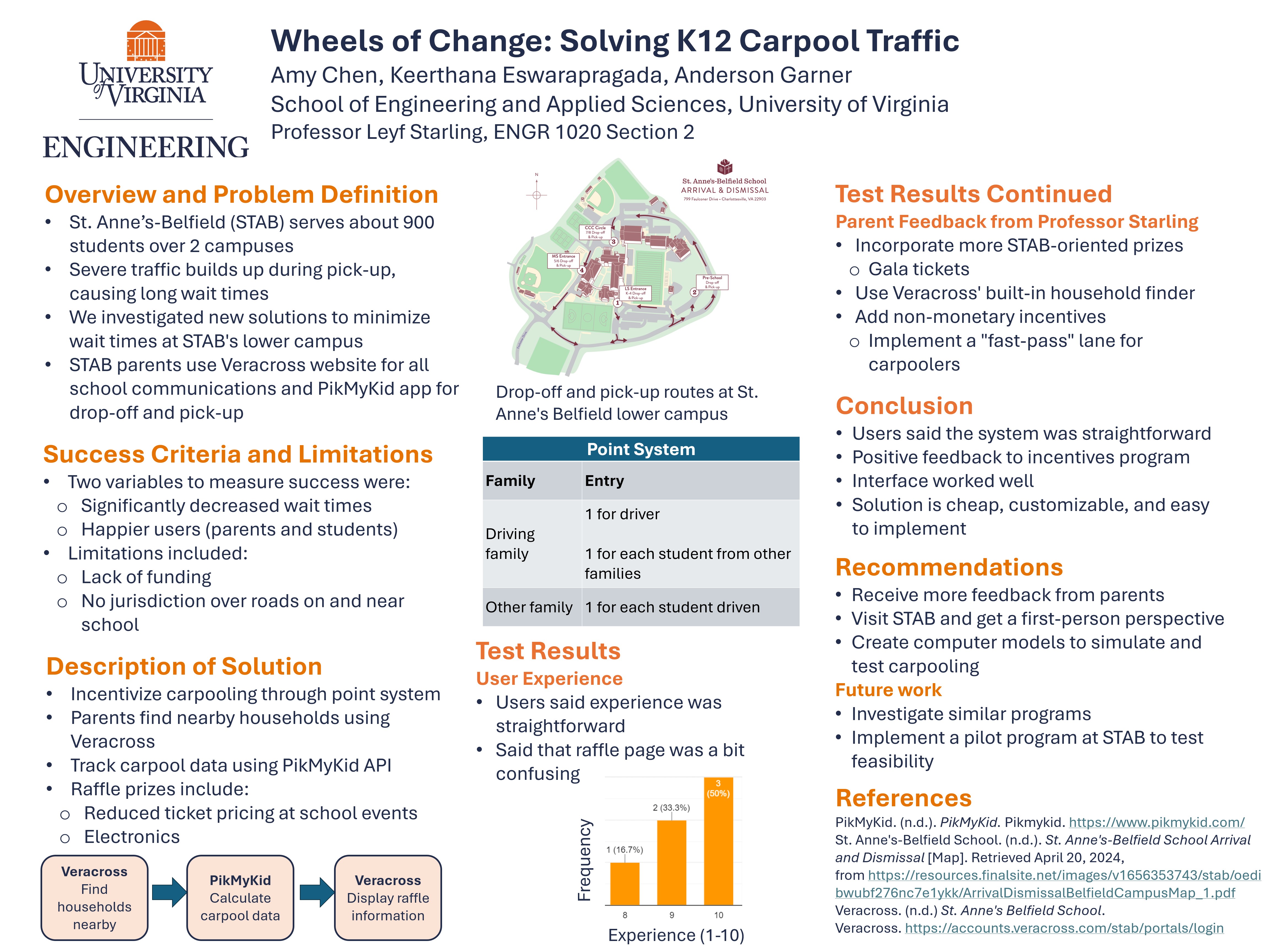 Download Full Technical Report Here
Download Full Technical Report Here
St. Annes Belfield School
Engineering Foundations II | January – May 2024
Back to HomeSt. Anne’s-Belfield School is facing a serious challenge with traffic congestion during student dismissal. Long pickup lines—sometimes exceeding 40 minutes—have created frustration for parents, safety risks for children waiting outside, and added stress for faculty managing dismissal. The congestion also contributes to increased vehicle emissions and community-wide dissatisfaction with the driving experience.
Through client interviews, research, and traffic studies, it became clear that this is a complex issue influenced by overlapping dismissal times, parents arriving too early, single-lane circulation routes, and limited jurisdiction over nearby roads. Previous solutions, including a parent communication app and state-level infrastructure projects, have not significantly improved the situation.
Our project seeks to design a multi-faceted solution that improves the dismissal process, reduces parent wait times, enhances child safety, and minimizes environmental impact—all while working within the school’s budgetary and jurisdictional limitations.
How can St. Anne’s-Belfield redesign its dismissal process to:
To address dismissal congestion at St. Anne’s-Belfield K–8 campus, we focused on the root cause: the high number of cars entering campus during pickup. Instead of pursuing costly construction projects, we developed a strategy to reduce the number of vehicles through an incentivized carpool system.
Our solution was designed around a point-based reward program:
To ensure smooth adoption, we proposed integrating the system into PikMyKid or Veracross, apps already familiar to St. Anne’s parents. By rewarding collaboration, the system encourages more carpools, fewer cars, and ultimately shorter wait times.
Testing included three main components:
Although we were unable to fully deploy the system at St. Anne’s during the project timeline, simulated results and parent feedback indicated that the solution is both practical and scalable.
This project highlighted the importance of addressing behavioral patterns rather than only physical infrastructure. By reframing the problem from “moving cars faster” to “reducing the number of cars,” we created a cost-efficient, sustainable, and community-driven solution.
Key takeaways include:
Ultimately, our proposed system demonstrates that small behavioral shifts, supported by technology and incentives, can meaningfully reduce congestion while improving the daily experience for families and staff.